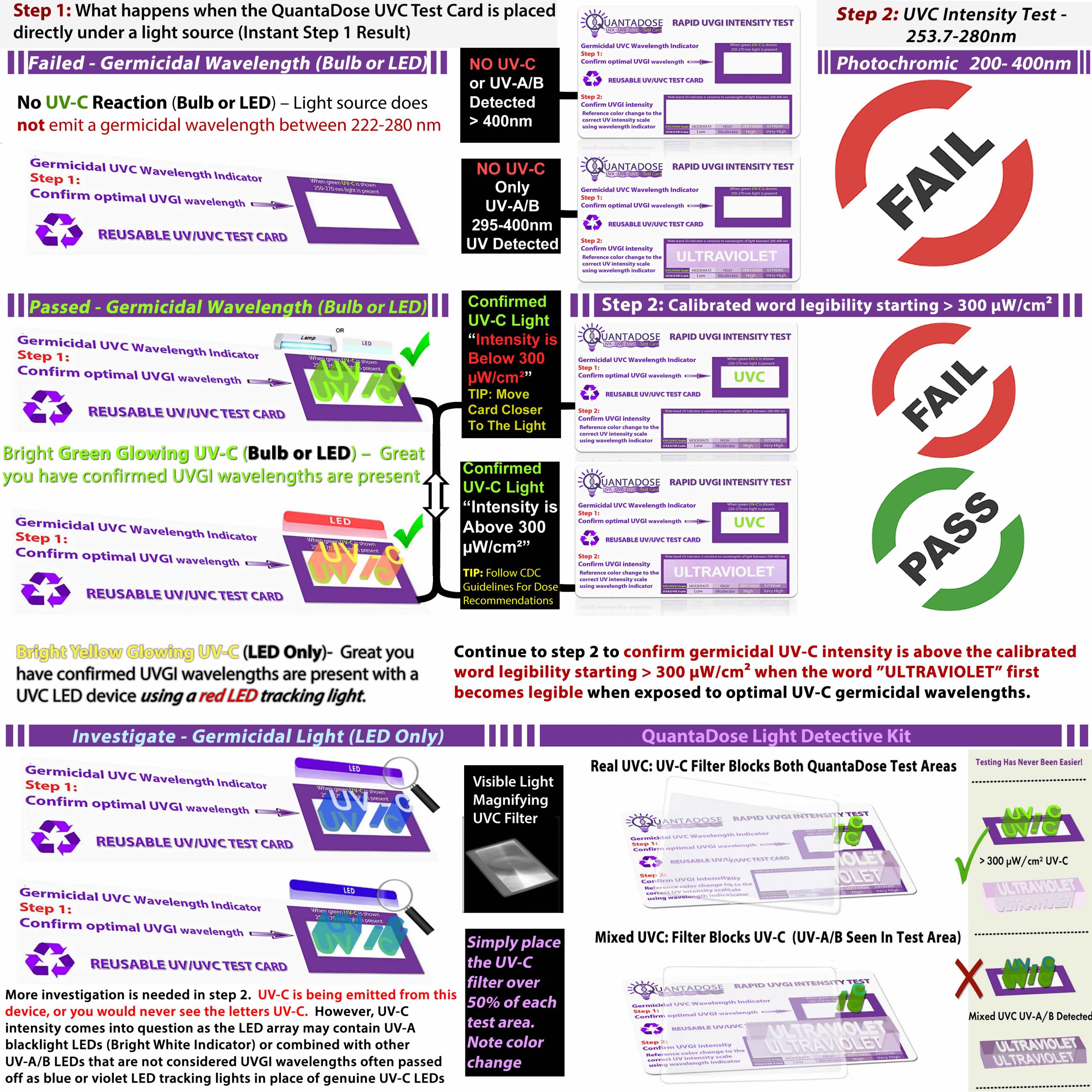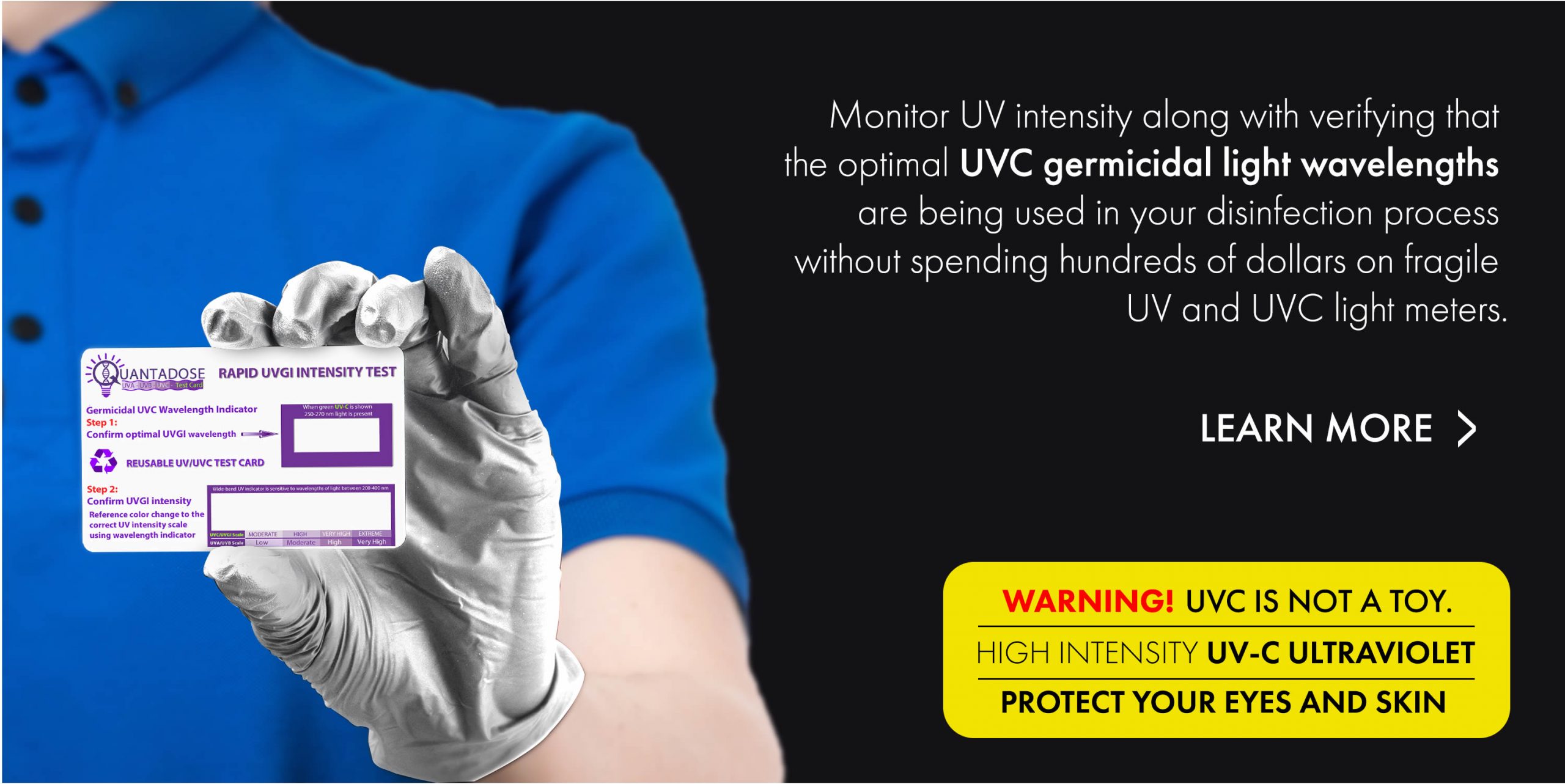NeX-Gen UVC Detection
Introducing the world’s first reusable UVC Test Card with UVC light wavelength Indicator and UV intensity test using word power visibility!
The QuantaDose® UVC intensity test card relies on two steps, first UVGI wavelength detection, and second calibrated word legibility starting at 300 µW/cm² when the word “ULTRAVIOLET” first becomes legible during exposure to UVC light. Word Power Visibility (WPV)
The top indicator is needed to confirm UVC intensity is being measured in the lower test area and not UV-A or UV-B!
The letters UV-C glow brightly when measuring the correct UVGI wavelengths between 222 nm – 280 nm.
After confirming optimal germicidal UV-C wavelengths, determining power is easy using a minimum calibrated reference point of 300 µW/cm² mercury line UV-C intensity with breakthrough photochromic Word Power Visibility (WPV) for dosage calculations starting from the point of WPV calibration.
Instant UVC Wavelength Detection – Far-UV 222 nm – 280 nm UV-C
Wide-band UV Intensity Test Aera For UVA/UVB/UVC
Reusable UV/UV-C Test Card For Visual Analysis
Works with UV-C LEDs, UV-C Bulbs, and UV-C Lamps
Also Available On:
When you try the QuantaDose® UV-C test card, you’ll learn just how easy it is to check if your UV sanitizer is working at home!
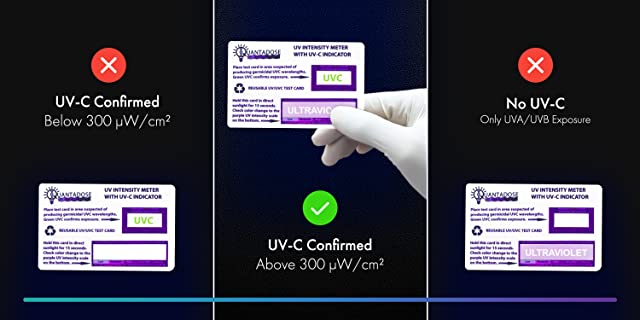
Incredible Features: Totally self-powered instant germicidal UV-C detection between Far-UVC 222 nm through Near-UVC 280nm, including a very wide-band photochromic UV Intensity test area sensitive to UV-A through UV-C wavelengths.
Learn how easy it is to check if your UV sanitizer works at home!
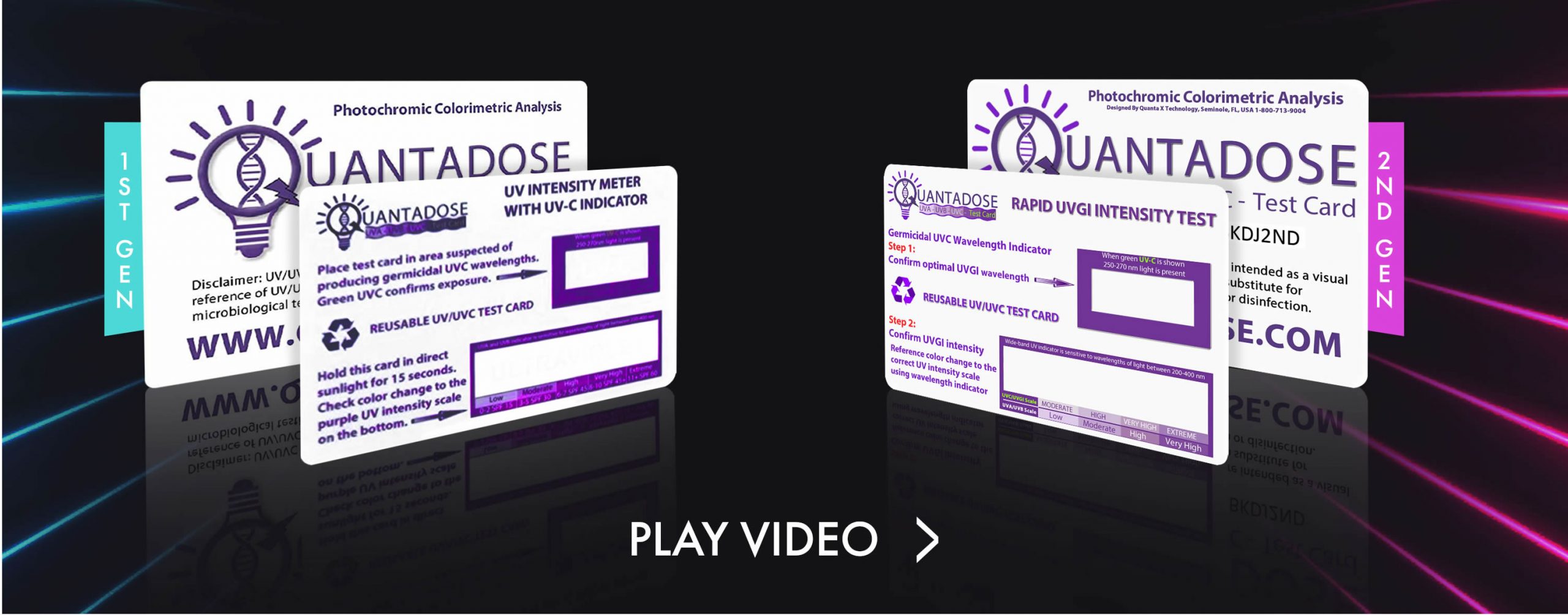
UVC Test Card with UVC Light Wavelength Indicator and Intensity Test
The QuantaDose® dual-wavelength multi-strip UVC test card measures UV intensity with a very specialized analyte for wide-band photochromic UV dosimetry combined with a narrow-band short-wave fluorescent indicator for testing optimal UVC germicidal wavelengths.
QuantaDose® provides real-time results for super fast verification/validation to ensure a UVC device works properly while avoiding an increasing number of fake and defective germicidal UVC light products on the market since the pandemic began.
QuantaDose® UVC test cards are a basic, reliable, low-cost, simple, in-house, reusable method of monitoring UV intensity and verifying that the optimal UVC germicidal light wavelengths are being used in your disinfection process without spending hundreds of dollars on fragile UV and UVC light meters.
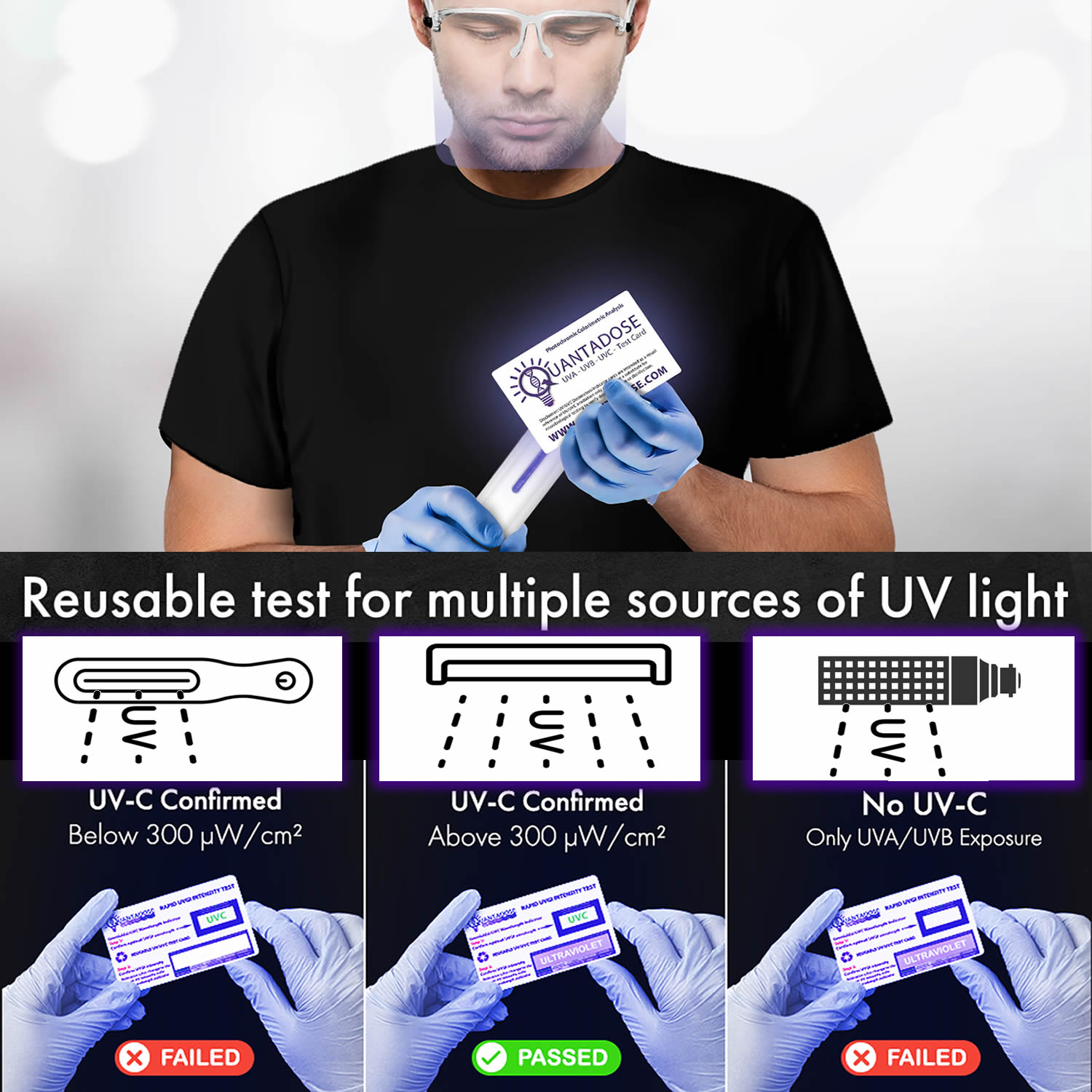
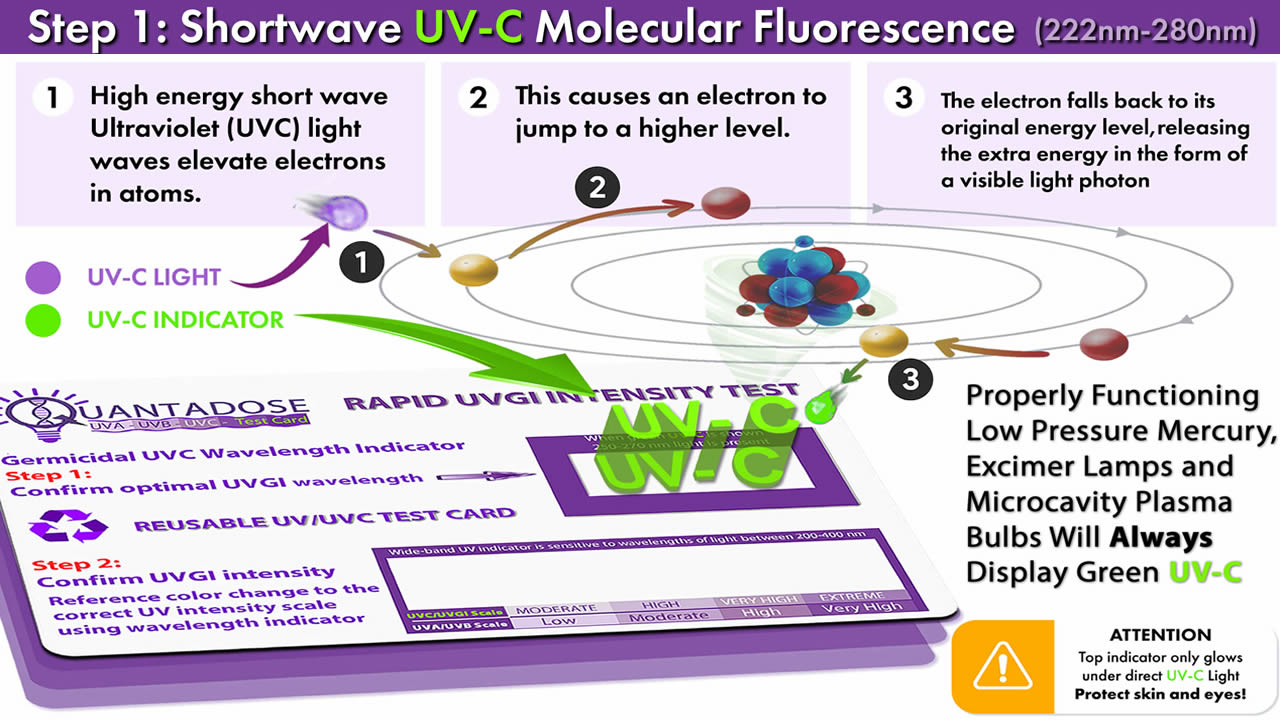
Step 1 confirms UV-C wavelengths when the specialized narrow-band shortwave analyte absorbs invisible UV-C light between 222-280 nm.
The top UV-C indicator then releases this invisible UV-C energy in visible photons at a visible light wavelength of approximately 515 nm or a frequency interval of around 590 THz.
Photons at this visible wavelength of light cause the letters UV-C to illuminate bright green glowing fluorescent color while exposed to direct UV-C light.
All genuine, properly functioning UV-C 253.7 nm Mercury Bulbs, Excimer Lamps producing FAR-UV 222nm or UV-C 200-280 nm, and Microcavity Plasma Bulbs emitting 222 nm FAR-UVC will all ALWAYS display bright green UV-C letters because the visible spectrum of light interference is limited to a maximum of 15% of the UV-C bulb’s total output power.
UV-C is invisible, so a visual exposure tracking indicator light is needed for narrow-band deep-UV UV-C LED product safety. The intentional mixing of light colors and less energetic UV-A and UV-B light only occurs when testing UV-C LED light sources.
The color that Step 1 emits is only relative to green photons under any UV-C irradiation conditions; however, just like mixing colors of paint, mixing colors of light as these photons reach your eyes will change the original color perception.
Decoding (RGB) Red, Green, and Blue primary and secondary additive colors of light when testing UV-C LED devices.
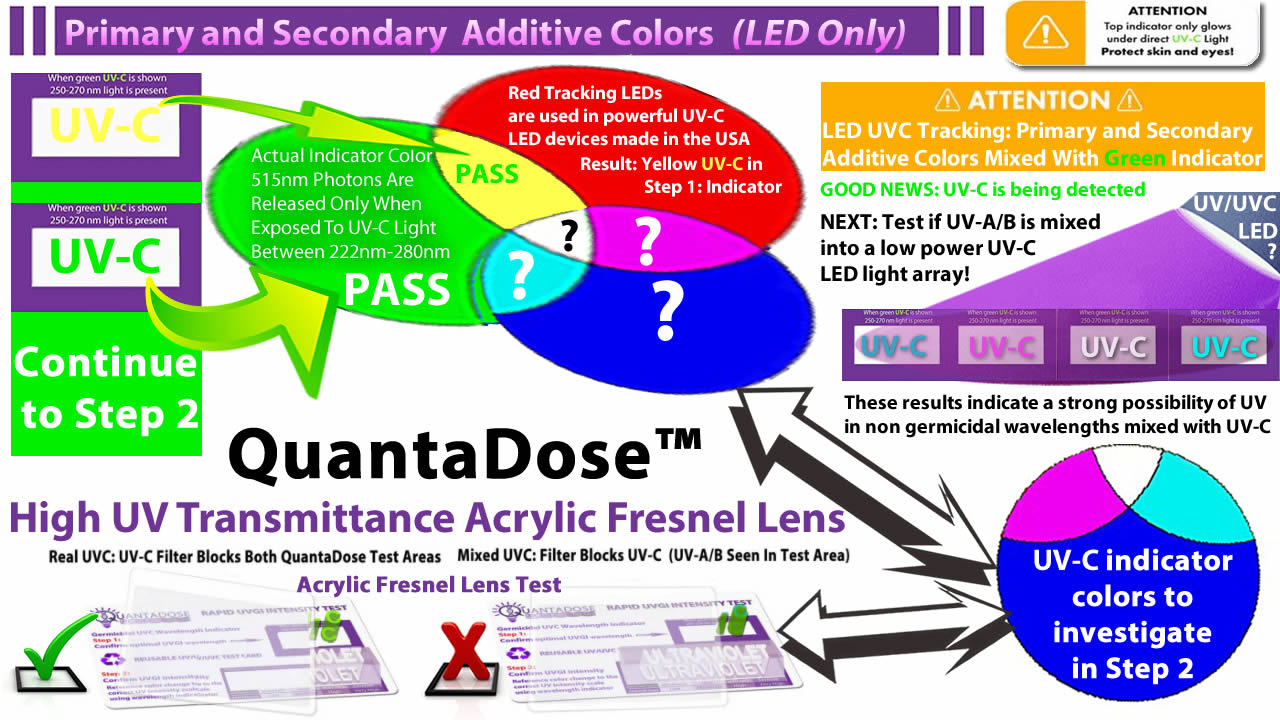
Passing LED Results – Continue to step 2 for UV-C intensity testing.
Green or Yellow UV-C letters are a passing UV-C LED result – Continue to step 2 for UV-C intensity testing.
Properly functioning UV-C bulbs always produce glowing green UV-C letters, which is the expected passing test result color when there are low non-UVGI wavelengths and low visible light color interference.
Glowing yellow UV-C letters is also a passing test result when red LED tracking lights are used in high-power professional UV-C LED devices manufactured in the USA.
The most reputable UV-C LED light manufactures in the USA use a red LED tracking light. Red is a color wavelength that can’t be confused with UV output power in germicidal lighting applications.
Why is red the best color tracking light for use in UV-C LED devices?
The color red has the longest visible light waves, while purple (violet) has the shortest light waves, closest to non-germicidal UV black lights.
Manufacturers using red LED tracking lights for their UVC LED light arrays to take a nothing to hide approach is something that everyone at QuantaDose® applauds!
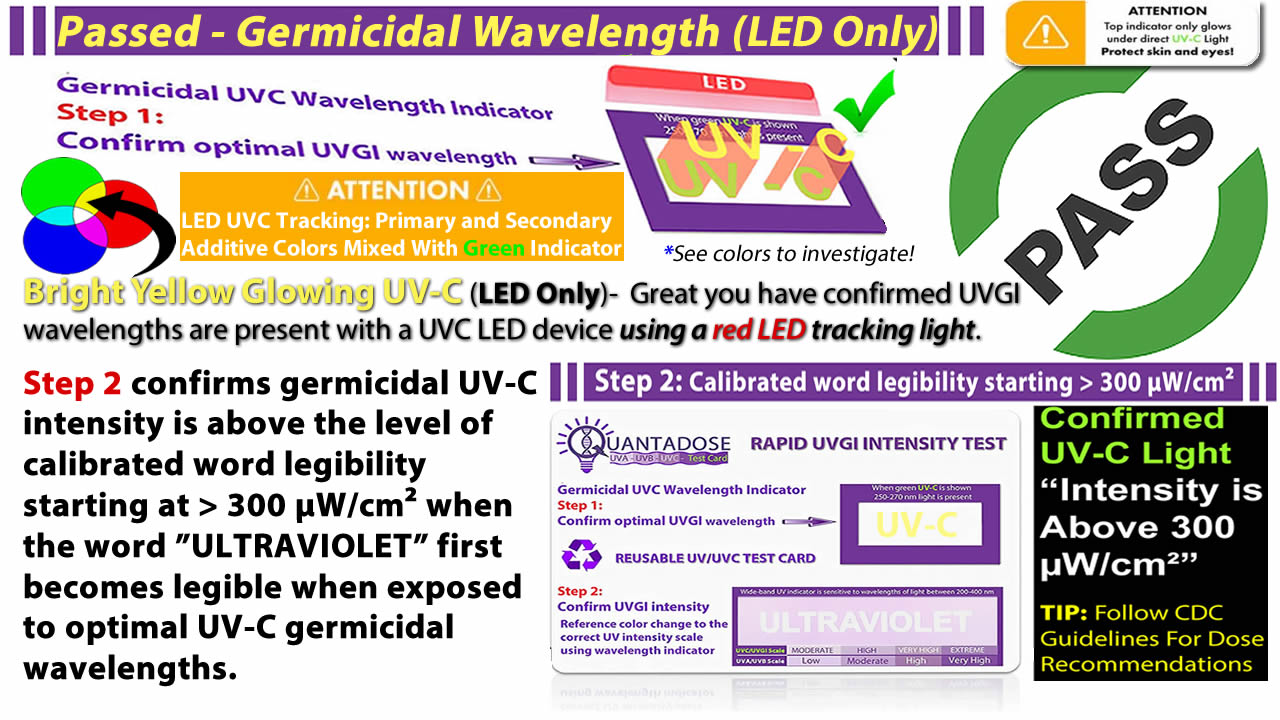
A passing yellow UV-C letters test result in Step 1 shows that the red LED light is mixing with the green light emitted from the UV-C indicator resulting in yellow light in the visible spectrum emanating from the Step 1 UV-C letters.
ATTENTION: Blue or White QuantaDose® UV-C indicator colors require more investigation to ensure UV-A or UV-B isn’t the dominant irradiation wavelength mixed into UV-C LED arrays sold as genuine UV-C LED arrays.
It is important to note that deciphering UV-C LED intensity over non-germicidal UV intensity combined in LED arrays requires an added UV test accessory when arrayed with unwanted UV-A or UV-B LEDs. This requires a QuantaDose™ high UV transmittance acrylic Fresnel lens in combination with Step 2.
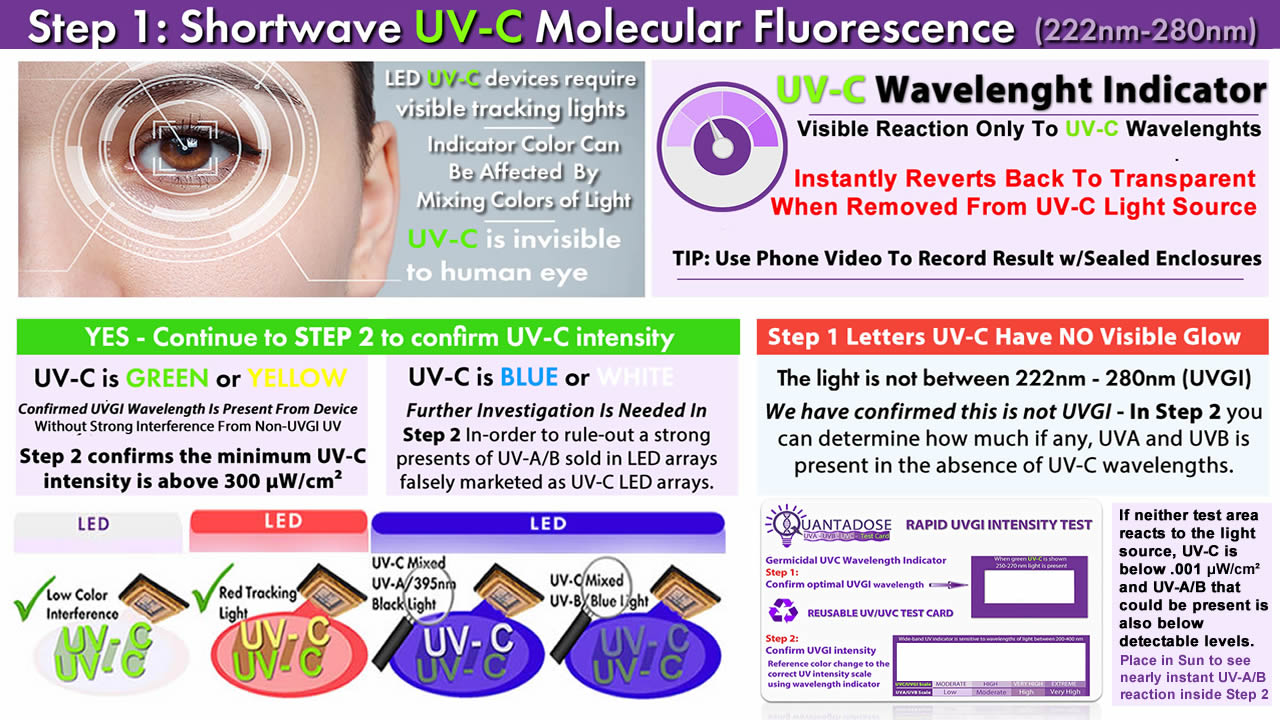
IMPORTANT STEP 1 FACTORS!
1) Step 1 letters instantly stop glowing when not exposed to direct UV-C light.
2) UV-C letters are only visible when directly exposed to UV-C light between 222nm – 280 nm. No Glowing Letters = No UVC wavelengths!
3) The green UV-C letters can be affected by additive colors used for LED tracking or even unwanted UV-A or UV-B mixed with low-power UV-C.
4) Always protect eyes and skin from exposure to all human-made UV light sources.
EXTRA IMPORTANT!
Step 1 is a wavelength indicator only! Indicating UV-C light is present does NOT mean the UV-C light has the power to do the job! This is the importance behind the QuantaDose® UVC test card being a 2 part test!
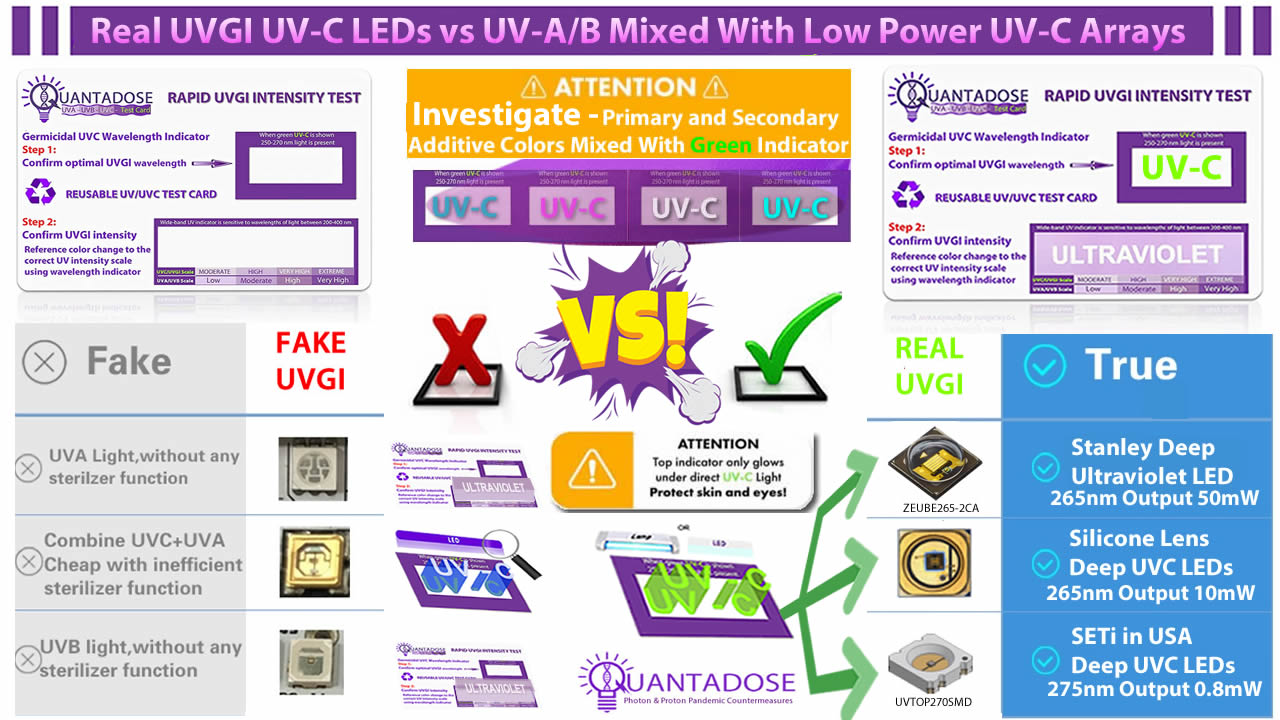
Less reputable companies selling devices that bypass regulation in the USA will try to hide UV-C LED underperformance by adding several much cheaper UV-A or UV-B LEDs into an array sold as a genuine germicidal UV-C array.
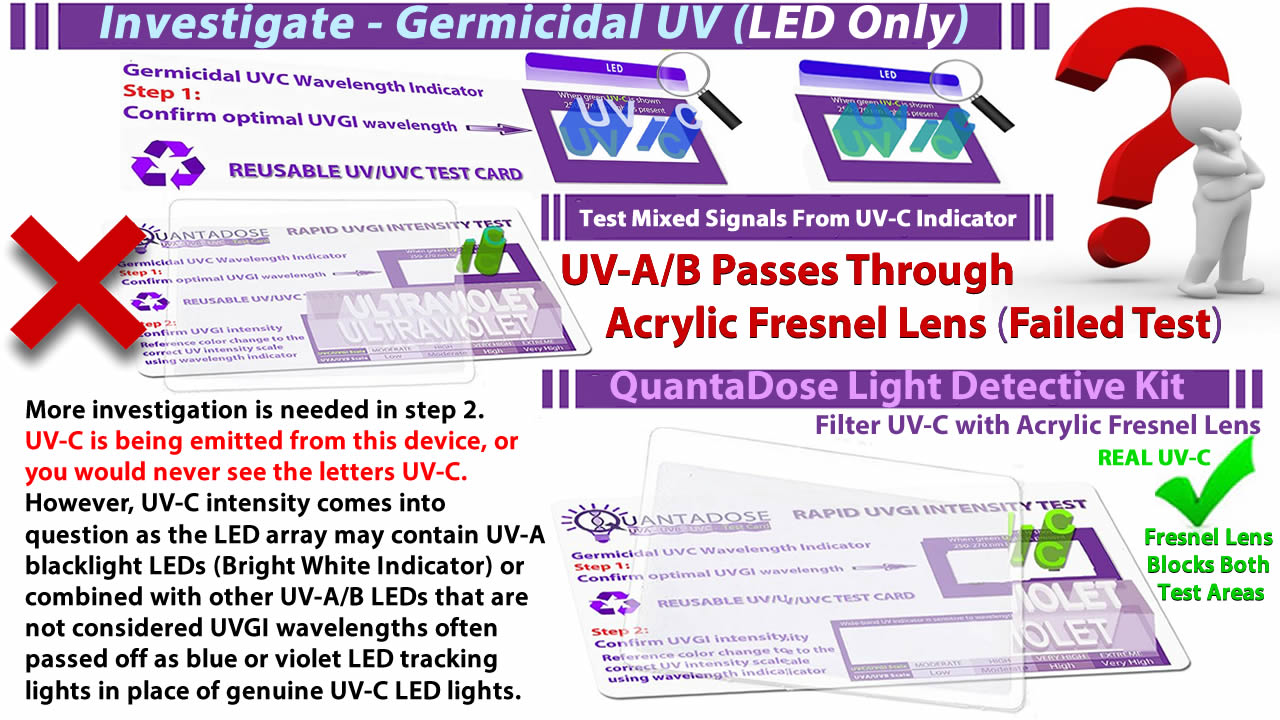
This nongermicidal UV deception is often disguised conveniently as blue and violet UV-C tracking LEDs, resulting in white or blue Step 1 UV-C indicator color that requires further investigation in step 2.
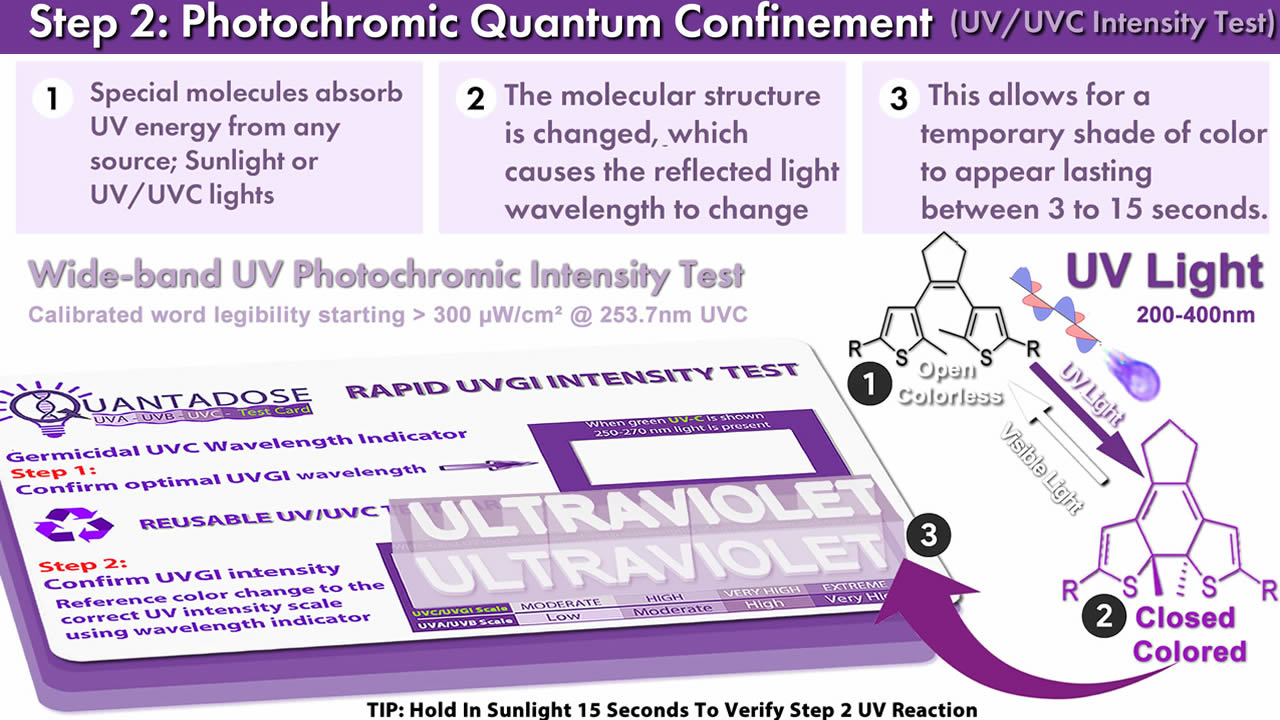
Step 2: The QuantaDose® UVC test card uses a very wide-band photochromic test area that relies on calibrated word power visibility (WPV) starting > 300 µW/cm² when the word ”ULTRAVIOLET” first becomes legible exposed to optimal UV-C germicidal wavelengths.
For a UV-C wavelength to truly be germicidal, the intensity over time is a dosage of irradiance measured in units where one microwatt of energy delivered equals delivering one microwatt of energy for one second over a given surface area such as a centimeter squared.
The minimum WPV intensity of 300 µW/cm² provides a point of visual intensity reference when the word ”ULTRAVIOLET” first becomes legible for meaningful UVC dosage calculations.
This makes the QuantaDose® an essential and very beneficial UVC testing tool. Just as a ruler is to a computerized calculator, the QuantaDose® is to a computerized UVC intensity or UVC dosimeter meter with the added benefit of fitting into places that UV-C meters can’t and totally self-powered too.
Getting the UVC dosage right!
How long will it take to reach a full-color change in an expensive single-use medical-grade 100 mJ/cm² UVC dosimeter card at a confirmed QuantaDose® minimum intensity of 300 µW/cm² UV-C?
The answer is easy with QuantaDose®; it will take no longer than 5 minutes and 55 seconds! Just calculate how many microwatts (for a passing test result, we know this is at or above 300) multiply the number of seconds needed to reach the required dosage like this: .300µW times 333 seconds equals 99.9 mJ/cm².
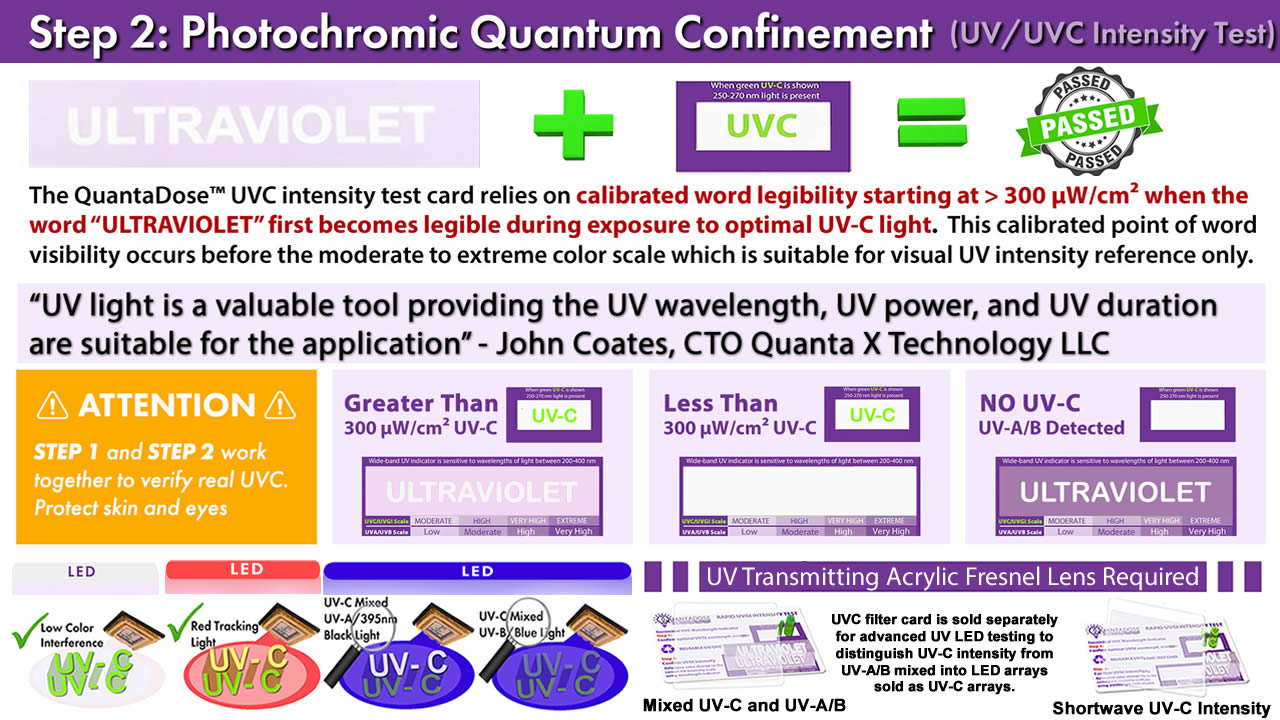
Before the pandemic, 100 mJ/cm² was a standard UVC dose in the healthcare industry for disinfecting pre-cleaned hard surfaces in rooms to assist in a greater log reduction of infectious agents. This 100 mJ/cm² is still acceptable for non-porous surfaces like most pre-cleaned plastics, metals, and glass.
However, completely new UV-C dosage guidelines have been issued by the CDC for PPE that suggest a required UVC dosage is a minimum of 10 times the UVC dosage used to clean inside hospital rooms in the past, thus putting the required UV-C dosage at between 1000 and 3000 mJ/cm² for PPE.
To put this into perspective for proper PPE UVC disinfection, at 1500 µW/cm², it would take 667 seconds to reach the lowest recommended dosage value of 1000 mJ/cm² in 11 minutes and 11 seconds, and that UVC dose is also required for both sides of the PPE as well.
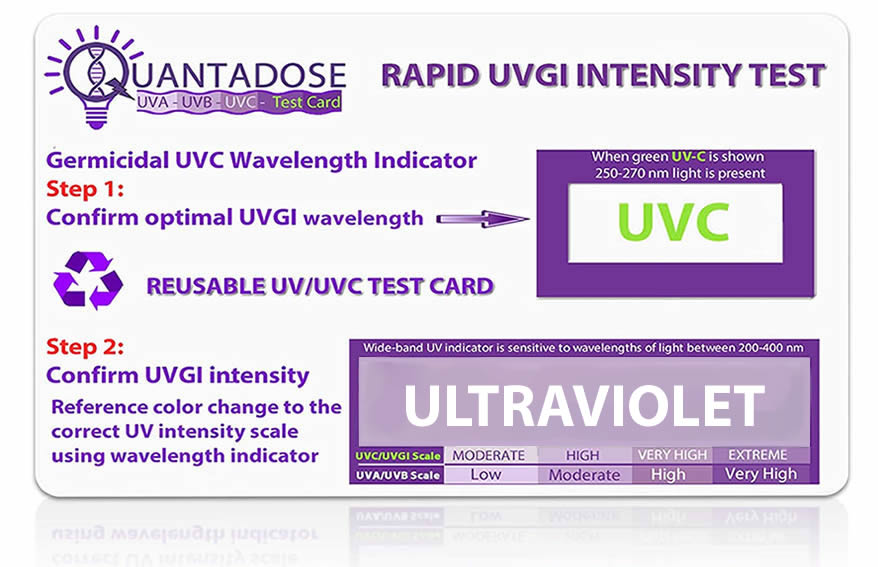
To calculate the UVC dosage time needed at a given distance from a UV-C light source for items such as PPE and figuring out what distance is required from the UV-C light source to meet CDC guidelines in a certain time frame requires a QuantaDose® UVC test card and just a little math, same as using a ruler.
This straightforward math is a fundamental rule in physics called the inverse square law of distance. It opens the door to instrumental mathematical calculations with a known point of power and distance from a UVC light source when using the QuantaDose® UVC test card.
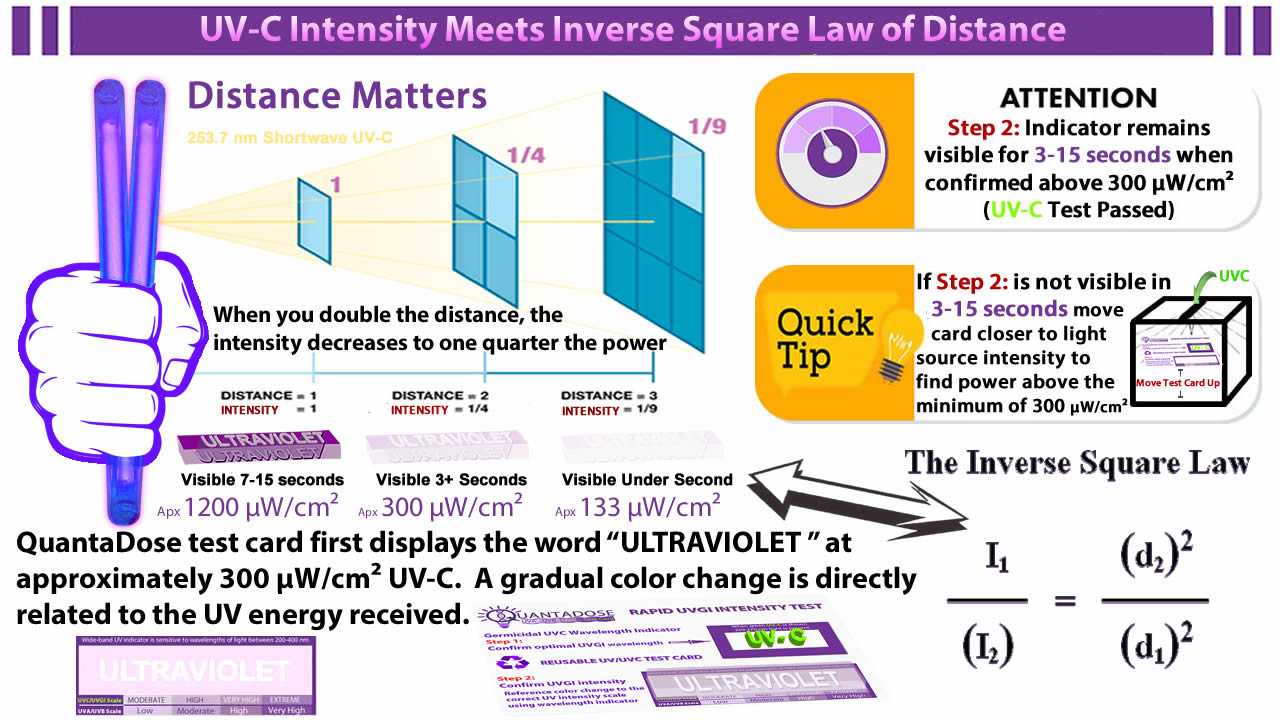
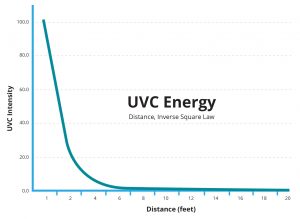
The reduction in UV intensity, or power, drops very quickly in a short distance. The simple formula for how fast this light energy drops off is UV power divided by the resultant quantity of distance away from the UVC light source raised to the second power (Ed = P/(d^2). This makes a very telling graph.
Every UVC light system has to deal with this reality of physics. QuantaDose® brings this invisible UV energy problem to light with a 15-second flash of a UVC test card!
It is imperative to know the UVC power level at the distances from the light source intended for disinfection. For example, starting with a “100%” UVC energy value, the light’s energy at four feet is, incredibly, reduced to only “6.3%” of the original UVC light energy! At ten feet, the UVC light has only 1% of the initial UVC light energy. The key point is that distance from the light matters a lot. The best results from UVC light happen in very close proximity to the target object(s). So, key point: “Get the dose close.”
It is important to confirm the QuantaDose® Step 2 point of calibrated word power visibility (WPV) starting > 300 µW/cm² when the word ”ULTRAVIOLET” first becomes legible under confirmed UVC wavelengths.
This is a handy reference point of UVC power and distance from the source to calculate UVC dosage and intensity either closer or further from the point of being confirmed just above 300 µW/cm² when ”ULTRAVIOLET” first becomes legible using the equation (Ed = P/(d^2). The example provided uses feet; however, the same rule applies to inches for small consumer-grade UVC sterilization products.
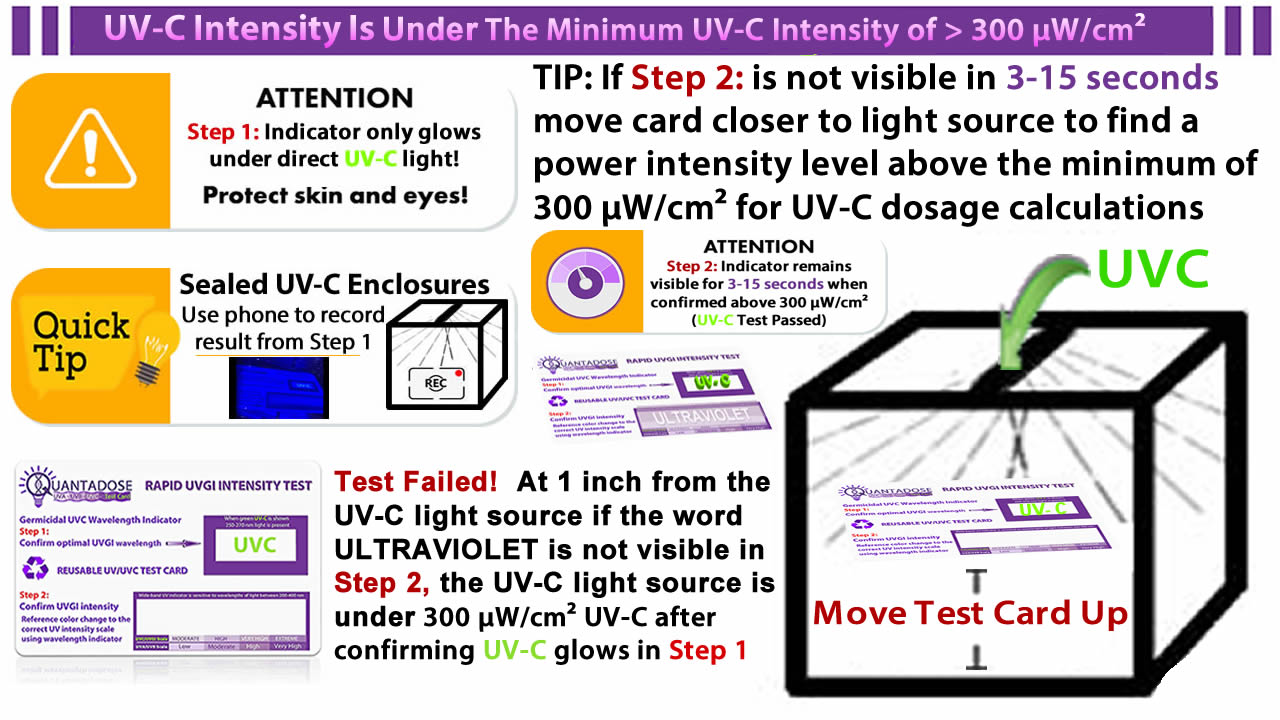
ATTENTION! Other factors than UVC power affect the color shades in step 2
If you are not getting a color change displaying the word ULTRAVIOLET in the lower section of the Quantadose test card while the UV-C indicator is green, the UVC light is likely not reaching the desired level of germicidal intensity required under the current CDC guidelines for intensity levels to achieve non-PPE disinfection in under ten minutes.
How many times can the intensity test be reused before photo-degradation affects dose accuracy? As for the top test area, there is no limit; however, for the bottom test area, there is.
The key determinant is the cumulative amount of exposure to UV radiation. Not the number of times the photochromic material is cycled between exposure; also important is the environment in which the material finds itself since this can influence its photochemistry too.
The stability of photochromic materials depends on numerous factors, which is the biggest reason we need your support to continue revolutionizing photochromic materials to meet the needs of a cost-effective and accurate UVGI testing method for end consumers and UVC install technicians.
While the shades of color in Step 2 do provide critical information for UV and UVC testing. It is important to note that all intensity time-dosage calculations must be done based on fluorescence conformation of UV-C in Step 1 and the calibrated > 300 µW/cm² legibility of the word ”ULTRAVIOLET” in Step 2.
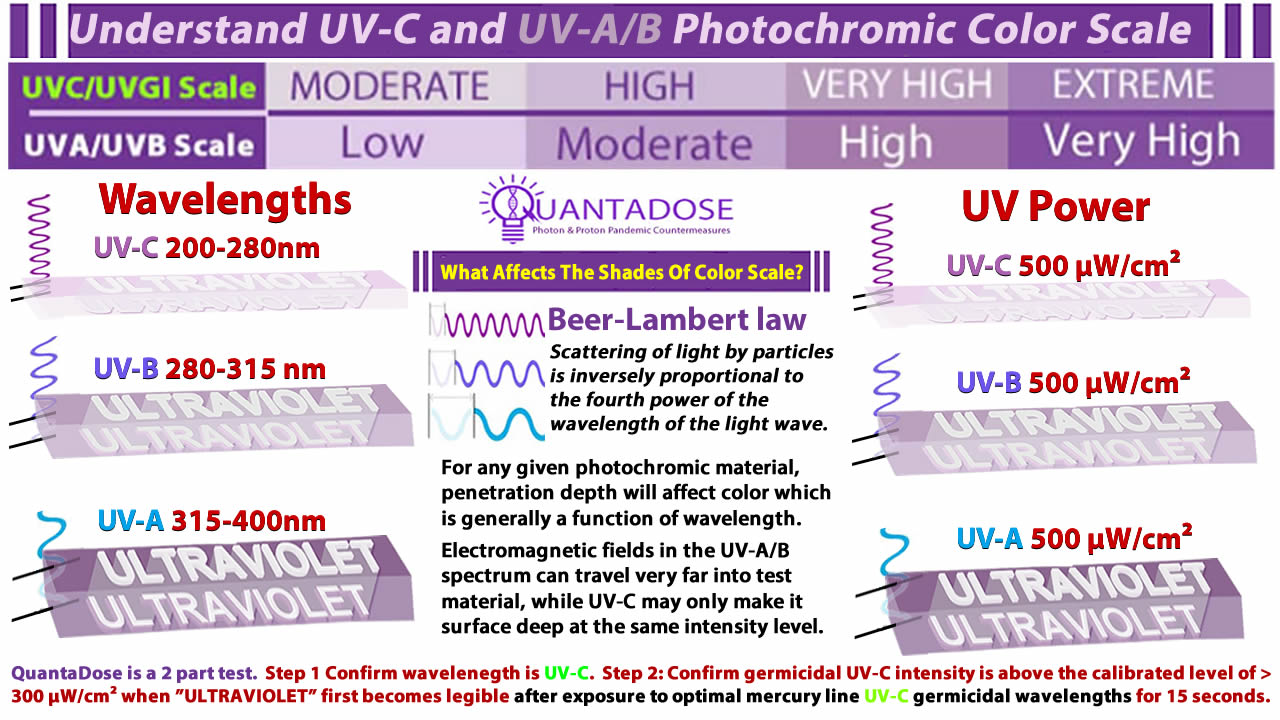
The Step 2 intensity color scale is for visual reference only to detect intensity levels at different UV wavelengths.
Step 2 color concentration is proportional to increases or decreases in UV power levels and UV irradiation wavelengths.
When it is suspected UV-A or UV-B wavelengths come from a UVC device claiming only to emit UVC.
The QuantaDose® color differential scale detects UV-A and UV-B LEDs by filtering UV-C from the device to quantify non-germicidal UV intensity in the final steps of testing questionable germicidal UV-C LED products.
UVC intensity should be questioned when UV-C LEDs are arrayed with a mixture of long and shortwave UV LEDs. The QuantaDose® color differential scale is important for color differentials when UVC filter testing the intensity levels from different UV LED wavelengths emitted from the same UVC LED array sold as germicidal. To perform wavelength intensity separation test requires a QuantaDose® high UV transmittance acrylic Fresnel lens combined with Step 2 as shown in the image below, which is available in the 4 pc QuantaDose® Light Detective Kit.
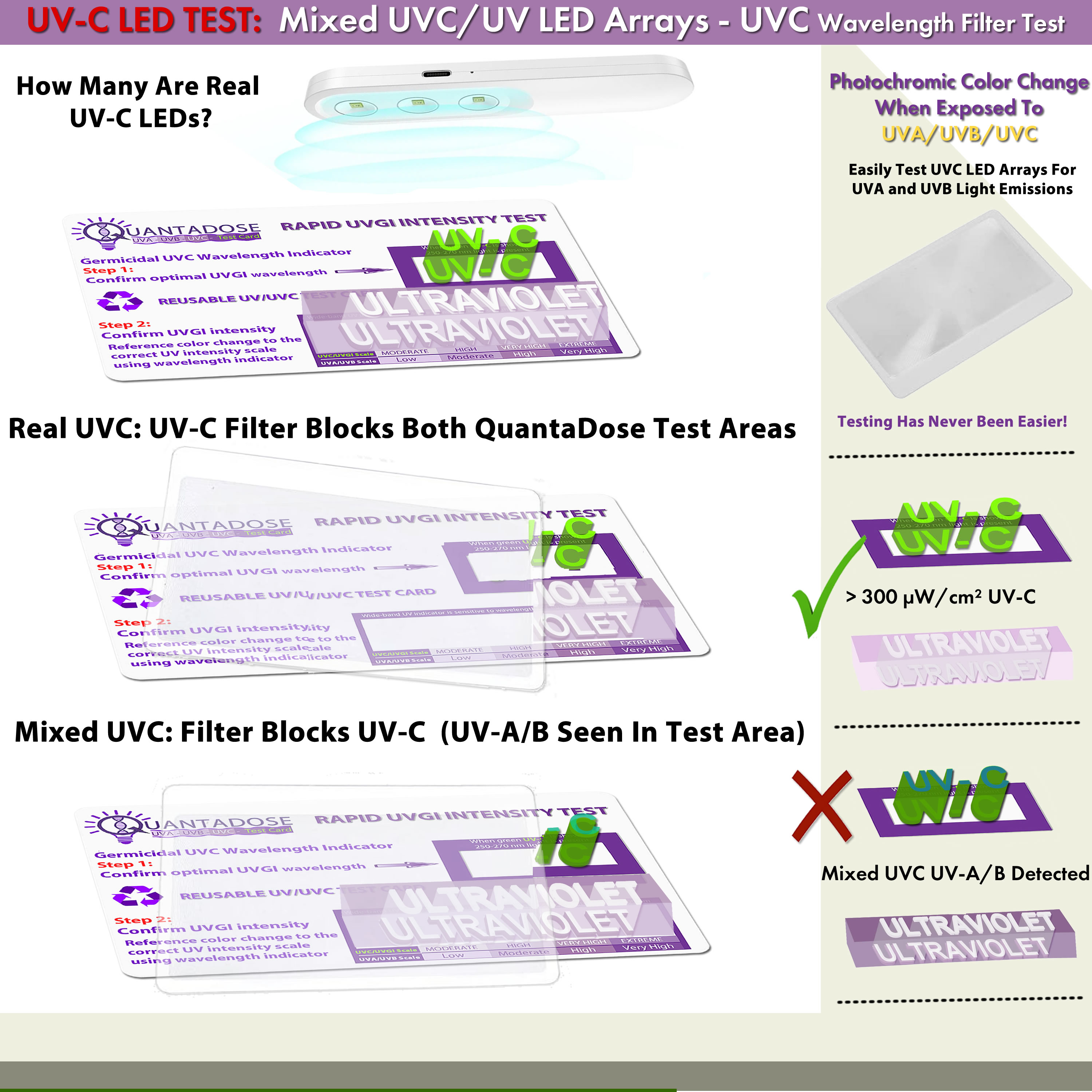
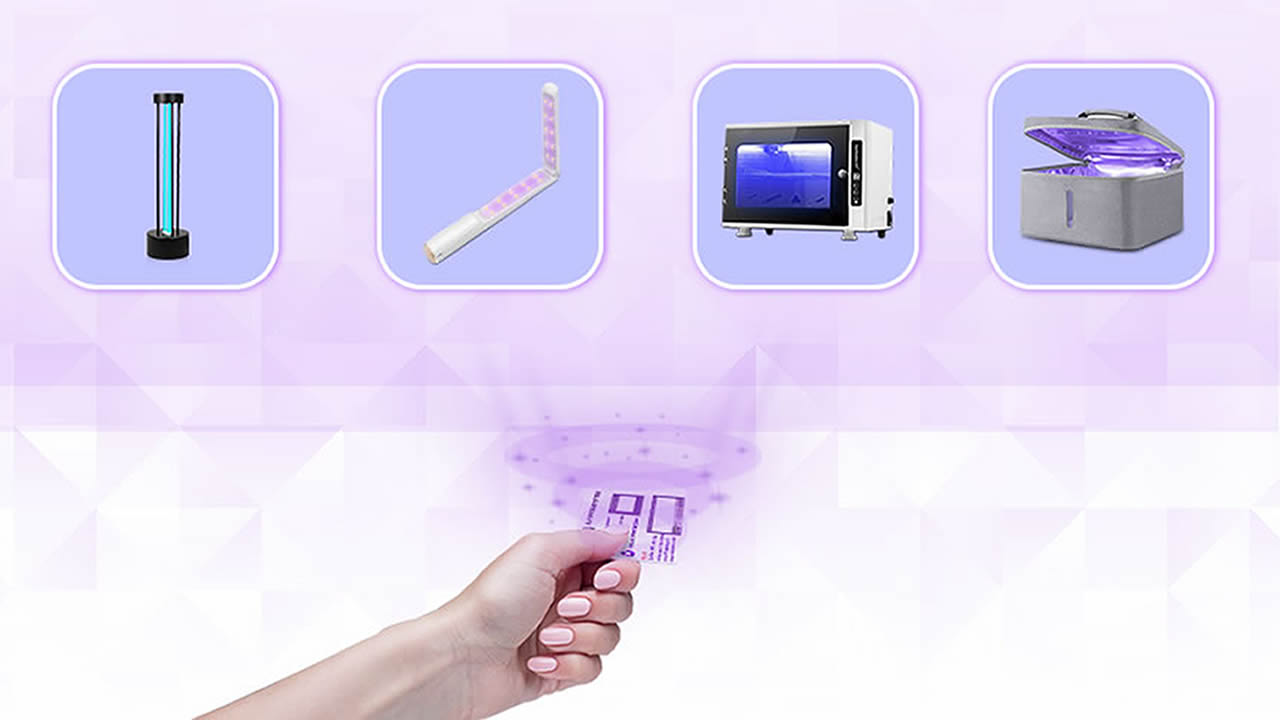
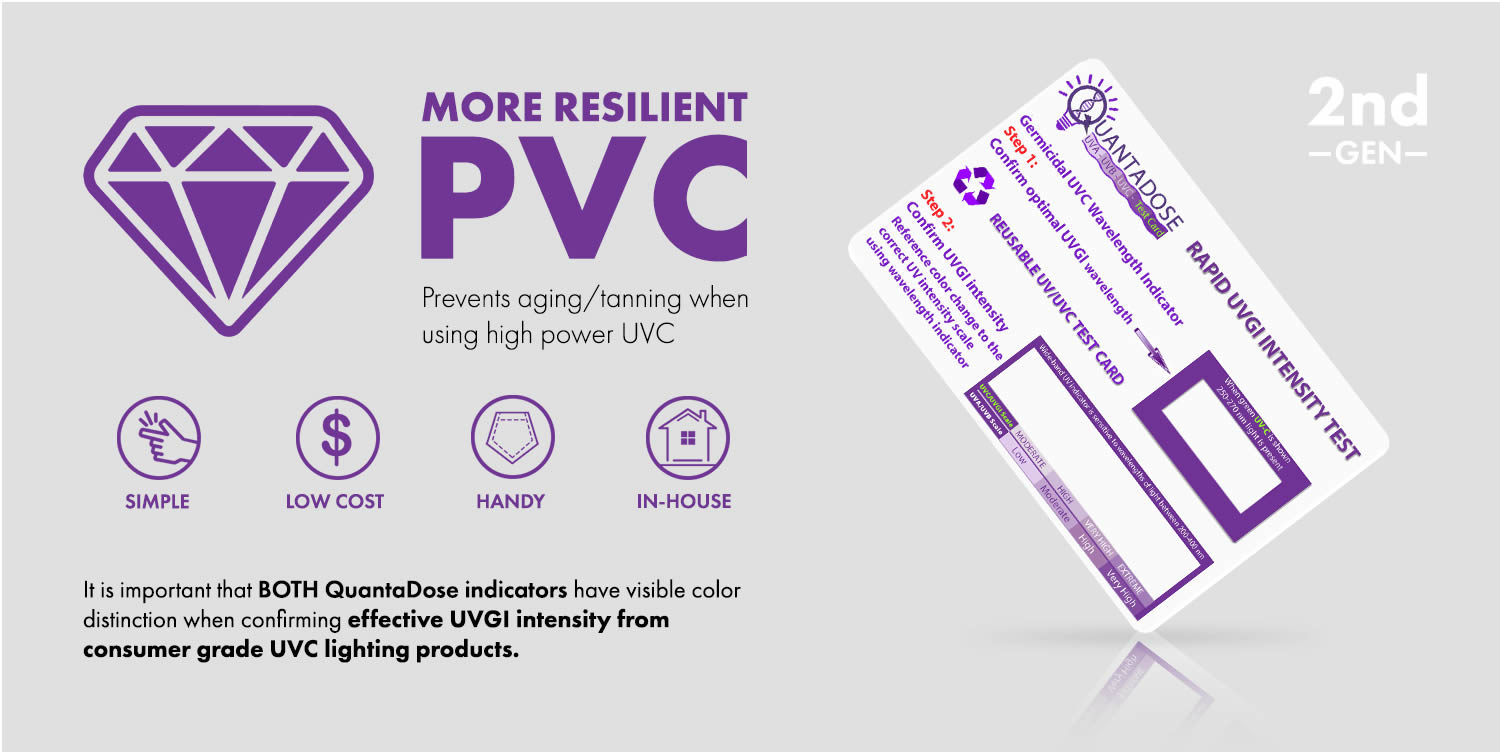
Reusable UVC Detection
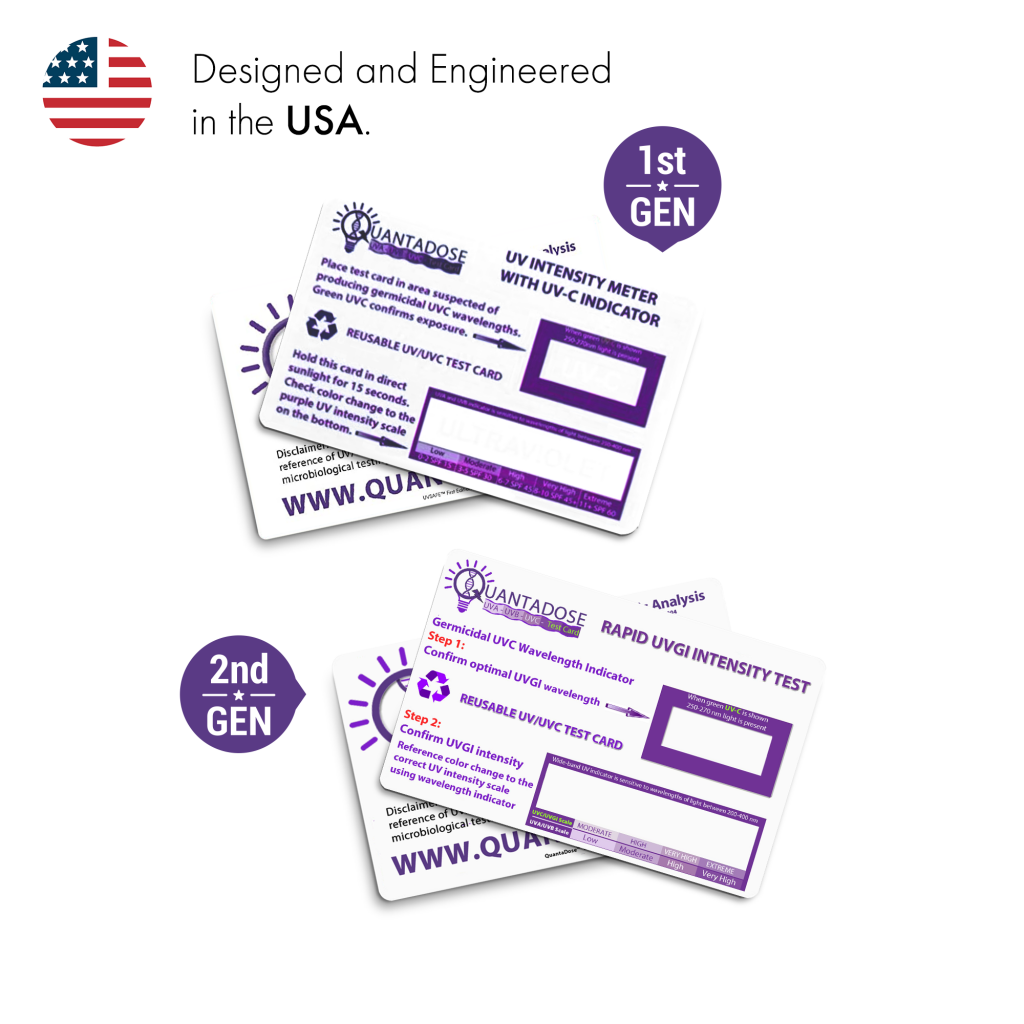
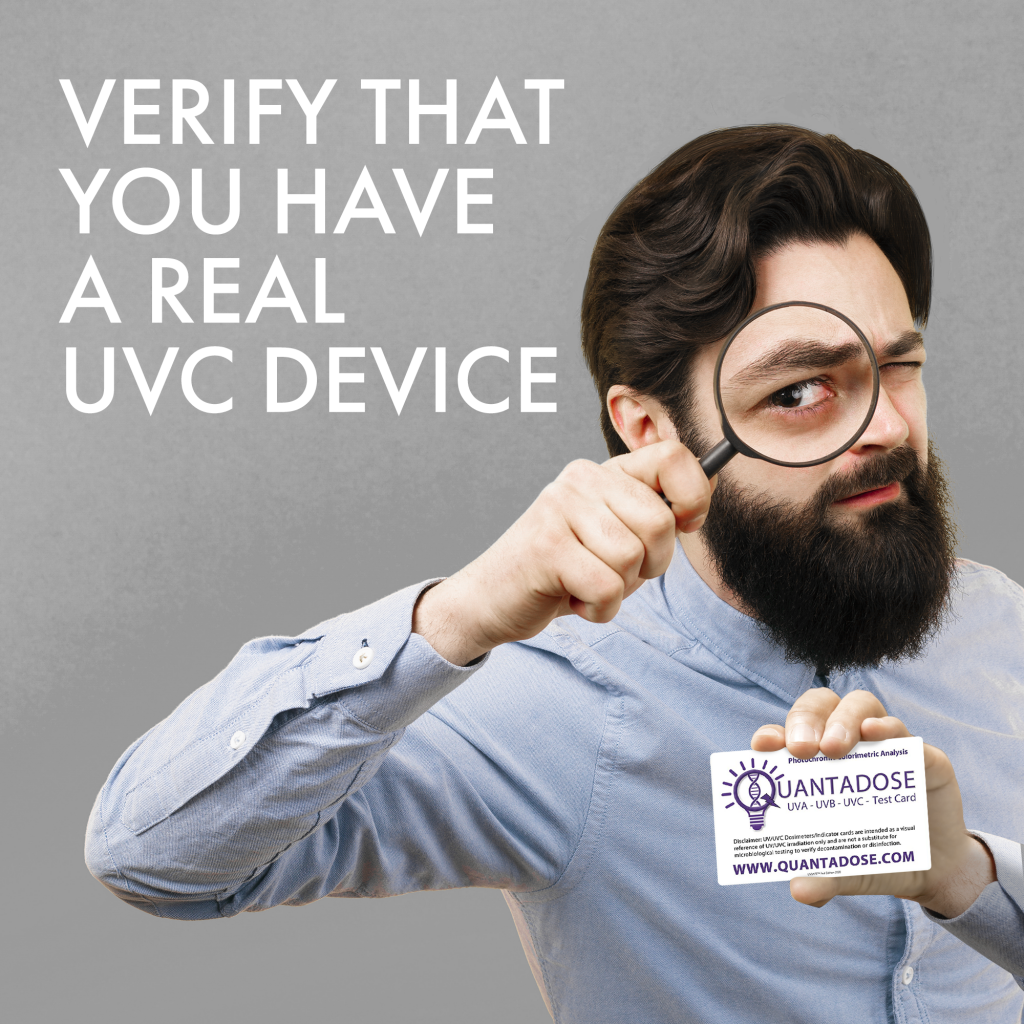
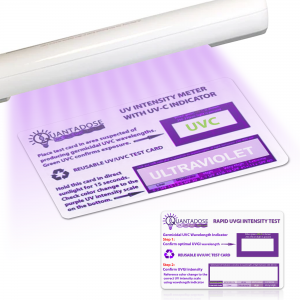
QuantaDose® 2nd Edition
The specially formulated UV analyte chemistry made by QuantaDose® ensures that germicidal wavelengths between 222-280nm are shown in green “UV-C” letters.
2nd Edition Differences
- Resilient PVC for Higher Power UVC
- Higher Card to Analyte Contrast
- Added UVC/UVB Color Scale Differential
- Batch Numbers For Quality Control
Order QuantaDose 2nd Edition
UVC Test Card
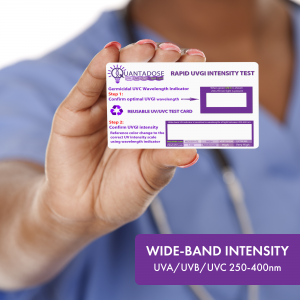
UVC Test CardOrder QuantaDose 2nd Edition
